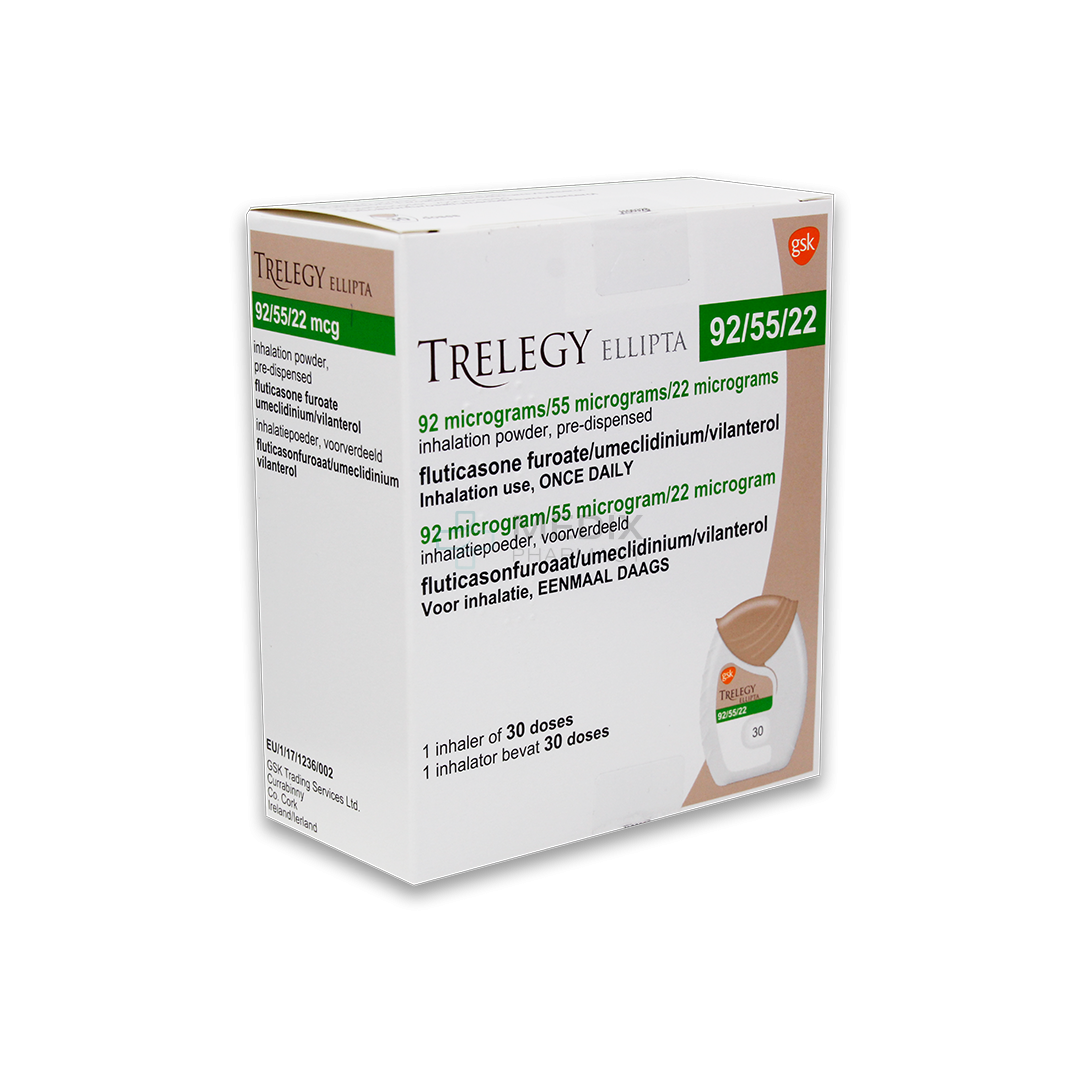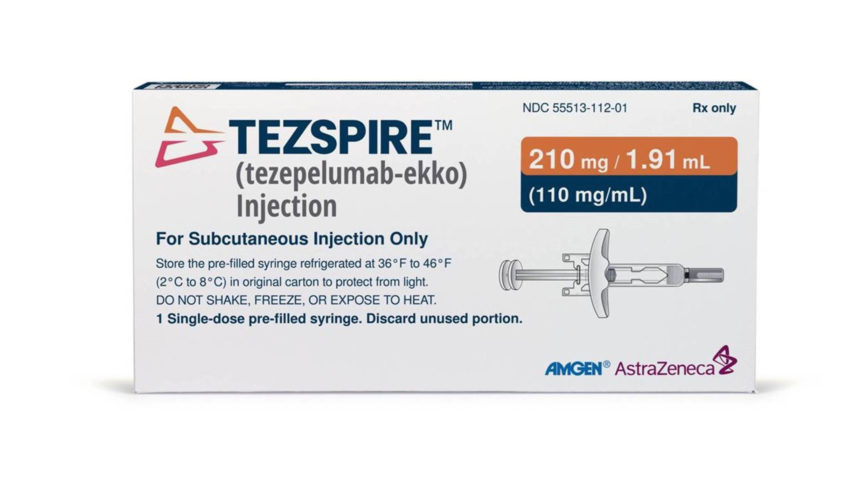New Asthma treatments 2024
New Asthma Treatments 2024
Asthma is a chronic respiratory condition characterized by inflammation and narrowing of the airways, leading to difficulty in breathing, coughing, wheezing, and shortness of breath. These symptoms are often triggered by various stimuli such as allergens, exercise, cold air, or respiratory infections. The severity of asthma can vary from mild, intermittent symptoms to severe, persistent issues that can be life-threatening if not properly managed. The condition is diagnosed based on medical history, physical examination, and lung function tests such as spirometry. Asthma cannot be cured, but with the right management plan, individuals can lead active and normal lives.
When considering treatment options for asthma, the main goals are to control symptoms, prevent asthma attacks, and maintain normal lung function. Medications for asthma are broadly categorized into long-term control medications, which are taken daily to maintain control of persistent asthma, and quick-relief medications, used to alleviate symptoms during an acute asthma attack. Long-term medications include inhaled corticosteroids, leukotriene modifiers, and long-acting beta-agonists, often used in combination for better control. Quick-relief medications typically involve short-acting beta-agonists. It is essential for individuals to work closely with their healthcare provider to tailor a treatment plan that suits their specific needs and to adjust medications as required over time.

Treatment options
| Treatment option | Estimated cost | Efficacy | Eligibility |
|---|---|---|---|
| Inhaled Corticosteroids (e.g., Fluticasone) | $10 - $60 | Highly effective in reducing inflammation and controlling symptoms | Most patients with persistent asthma |
| Short-Acting Beta Agonists (e.g., Albuterol) | $20 - $50 | Effective for quick relief of acute symptoms and prevention of exercise-induced bronchospasm | All asthma patients for as-needed use |
| Long-Acting Beta Agonists (e.g., Salmeterol) | $30 - $100 | Effective in controlling symptoms, particularly when combined with inhaled corticosteroids | Patients with moderate to severe persistent asthma |
| Leukotriene Modifiers (e.g., Montelukast) | $10 - $180 | Effective as add-on therapy to reduce the need for inhaled corticosteroids | Patients with mild to moderate persistent asthma |
| Combination Inhalers (e.g., Fluticasone/Salmeterol) | $100 - $300 | Highly effective in controlling symptoms and preventing exacerbations | Patients with moderate to severe persistent asthma |
| Trelegy Ellipta (Fluticasone/Umeclidinium/Vilanterol) | $500 - $600 | Effective in improving lung function and asthma control | Patients with asthma not well controlled on a lower level of inhaled corticosteroid or those who require additional bronchodilation |
| Tezspire (Tezepelumab) | $2,500 - $3,000 | Effective in reducing exacerbations in patients with severe asthma | Patients with severe asthma who are not controlled on their current asthma medications |
| Clenbuterol | $50 - $100 | Not approved by FDA for asthma, efficacy data for asthma not well-established | Not eligible for asthma treatment in the US; used off-label or in other countries |
| Spiropent (Clenbuterol) | $50 - $100 | Similar to Clenbuterol, not approved by FDA for asthma, limited efficacy data | Not eligible for asthma treatment in the US; used off-label or in other countries |
| Omalizumab (Xolair) | $1,000 - $3,000 | Effective in reducing symptoms and exacerbations in allergic asthma | Patients with moderate to severe persistent asthma with an allergic component |
| Mepolizumab (Nucala) | $2,000 - $3,000 | Effective in reducing exacerbations in eosinophilic asthma | Patients with severe eosinophilic asthma |
| Biologic Therapies (e.g., Dupilumab) | $2,500 - $3,000 | Effective in reducing exacerbations and improving quality of life in certain types of severe asthma | Patients with severe asthma with an eosinophilic phenotype or dependent on oral corticosteroids |
| Experimental Treatments (e.g., Bronchial Thermoplasty) | Varies widely | Some studies show benefit in reducing asthma attacks and improving quality of life | Patients with severe persistent asthma that is not well controlled with medications |
Treatments options in detail
Long-term Control Medications
Long-term control medications are the cornerstone of asthma management and are important for keeping symptoms under control on a daily basis. Inhaled corticosteroids (ICS) are the most effective long-term therapy available for persistent asthma. They reduce inflammation and swelling in the airways, making them less sensitive and less likely to react to asthma triggers. Examples of ICS include fluticasone (Flovent), budesonide (Pulmicort), and mometasone (Asmanex).
Combination inhalers that contain both a corticosteroid and a long-acting beta-agonist (LABA) are also commonly used. LABAs help to relax the muscles around the airways that tighten during an asthma attack. These combination inhalers include fluticasone/salmeterol (Advair), budesonide/formoterol (Symbicort), and mometasone/formoterol (Dulera).
Leukotriene modifiers are oral medications that include montelukast (Singulair), zafirlukast (Accolate), and zileuton (Zyflo). They block the action of leukotrienes, substances in the body that can trigger asthma symptoms.
Theophylline is an older medication that is sometimes used in the management of asthma. It is taken daily in pill form and helps to keep the airways open by relaxing the muscles around them.
Inhaled Short-Acting Beta-Agonists (SABAs)
Short-acting beta-agonists are the most common quick-relief drugs for treating asthma attacks. They work quickly to relax tightened muscles around the airways, allowing them to open up so that air can flow through better. Albuterol (ProAir, Ventolin, Proventil) and levalbuterol (Xopenex) are examples of SABAs.
Anticholinergics
Anticholinergics can help to control asthma symptoms by blocking the action of acetylcholine, a chemical that can lead to tightened airways. Ipratropium (Atrovent) is a short-acting anticholinergic used for quick relief, while tiotropium (Spiriva) is a long-acting anticholinergic that can help with daily control.
Biologic Therapies
Biologic therapies are a newer class of drugs designed to target specific components of the immune system that contribute to asthma. Omalizumab (Xolair) is an injectable medication that targets immunoglobulin E (IgE), a molecule that can cause allergic reactions. Mepolizumab (Nucala), reslizumab (Cinqair), and benralizumab (Fasenra) target interleukin-5 (IL-5), which plays a role in the life cycle of eosinophils, a type of white blood cell involved in the inflammation associated with asthma.
Trelegy Ellipta
Trelegy Ellipta is a once-daily inhalation powder that combines three active ingredients: fluticasone furoate (an inhaled corticosteroid), umeclidinium (an anticholinergic), and vilanterol (a long-acting beta-agonist). It is approved for the maintenance treatment of patients with chronic obstructive pulmonary disease (COPD) and is being studied for its potential use in asthma.
Tezspire
Tezspire (tezepelumab) is an investigational biologic being studied for the treatment of severe asthma. It is designed to block the activity of thymic stromal lymphopoietin (TSLP), an upstream modulator in the inflammation pathway involved in multiple types of asthma. Tezspire has not yet been approved by the FDA for the treatment of asthma.
Oral Corticosteroids
For severe asthma flare-ups, short courses of oral corticosteroids may be prescribed to reduce inflammation. Prednisone and methylprednisolone are examples of oral corticosteroids. They are effective but can have significant side effects when used long-term.
Clenbuterol and Spiropent
Clenbuterol, also known as Spiropent, is a bronchodilator that is sometimes used for treating asthma outside of the United States. It is not approved by the FDA for this indication. Clenbuterol has a long half-life and has been associated with significant side effects, including tremors, headache, and an increased heart rate. It is important to note that clenbuterol is also used illegally for bodybuilding and weight loss purposes.
Immunomodulators
Immunomodulators are medications that alter the immune system's response. For asthma, they are typically used for patients with allergic asthma who do not respond well to inhaled corticosteroids. Omalizumab (Xolair) is an example of an immunomodulator currently approved for use in asthma.
Bronchial Thermoplasty
Bronchial thermoplasty is a non-drug treatment for severe asthma. It involves using a bronchoscope to apply controlled heat to the airways, reducing the amount of smooth muscle and thereby decreasing the ability of the airways to constrict. This treatment is typically reserved for adults with severe asthma that is not well controlled with inhaled corticosteroids and long-acting beta-agonists.
Experimental Treatments
Research into new treatments for asthma is ongoing. Experimental treatments may include new biologic therapies targeting different pathways in the inflammatory process, gene therapies, and novel bronchodilators. These treatments are in various stages of development and clinical trials, and are not yet approved by the FDA.
Lifestyle and Home Remedies
In addition to medications, managing asthma involves identifying and avoiding triggers, such as allergens, tobacco smoke, and air pollution. Regular exercise, maintaining a healthy weight, and controlling heartburn and gastroesophageal reflux disease (GERD) can also help to manage asthma symptoms. Breathing exercises and stress-reduction techniques may provide additional benefit.
Conclusion
Asthma treatment involves a combination of medications and lifestyle changes to control symptoms and prevent asthma attacks. While inhaled corticosteroids and combination inhalers are the mainstay of treatment, other options like biologic therapies and bronchial thermoplasty are available for severe cases. Experimental treatments and off-label use of medications such as clenbuterol require careful consideration and should be guided by a healthcare provider. It is important to work closely with a healthcare provider to determine the best treatment plan for individual needs.
Symptoms
Common Symptoms of Asthma
Asthma symptoms vary from person to person, but the most common symptoms include shortness of breath, wheezing, chest tightness, and coughing. Wheezing is a high-pitched whistling sound made while breathing, which is particularly noticeable during exhalation and is often one of the first signs of asthma. Shortness of breath may occur either as an acute symptom during an asthma attack or as a chronic issue in daily life. Chest tightness can feel like a squeezing or pressure in the chest, often described as someone sitting on one's chest. Coughing from asthma is typically worse at night or early in the morning, potentially interrupting sleep.
Variability of Asthma Symptoms
Asthma symptoms can be mild, moderate, or severe, and may occur every day, only during certain conditions, or very infrequently. The symptoms may also vary from one asthma attack to another, being mild during one and severe during another. Some individuals may experience long periods of symptom-free living, punctuated by periodic worsening of their symptoms, known as asthma attacks or exacerbations.
Asthma Attacks
During an asthma attack, the symptoms can escalate, leading to increased wheezing, severe shortness of breath, chest tightness and coughing. During these episodes, the airways in the lungs become swollen and inflamed, the muscles around the airways tighten, and mucus production increases, making it difficult to breathe. Asthma attacks can be life-threatening and require immediate medical attention if the symptoms become severe.
Exercise-Induced Asthma
Exercise-induced bronchoconstriction (EIB), which was previously known as exercise-induced asthma, is a condition where vigorous physical activity triggers asthma symptoms. Symptoms of EIB can include coughing, wheezing, shortness of breath, chest tightness, and fatigue during or after exercise. These symptoms often begin during exercise and can be more severe 5 to 10 minutes after stopping exercise.
Nocturnal Asthma
Nocturnal asthma refers to asthma symptoms that worsen at night. Triggers like allergens in the bedroom, cooler nighttime air, or lying down can lead to increased airway resistance and symptoms such as coughing, wheezing, and shortness of breath. This can significantly disrupt sleep and affect overall quality of life.
Allergic Asthma
Allergic asthma is triggered by airborne substances, such as pollen, mold spores, cockroach waste, pet dander, or dust mites. When someone with allergic asthma inhales these allergens, their immune system overreacts, leading to asthma symptoms. In addition to the common symptoms of asthma, allergic reactions can also cause sneezing, runny or stuffy nose, itchy eyes, and other typical allergy symptoms.
Occupational Asthma
Occupational asthma is caused by inhaling fumes, gases, dust, or other potentially harmful substances while at work. Symptoms are similar to those of other types of asthma but occur more prominently at the workplace and improve when away from the work environment. Chronic exposure can lead to persistent symptoms even when not at work.
Cough-Variant Asthma
Cough-variant asthma is characterized by a persistent, dry cough that may be the sole symptom. This type of asthma is often underdiagnosed because it lacks the classic asthma symptoms of wheezing or shortness of breath. The cough is often worse at night and in response to exercise or cold air.
Signs of an Asthma Emergency
Severe asthma symptoms can indicate an asthma emergency. Signs of an asthma emergency include rapid worsening of shortness of breath or wheezing, no improvement even after using a quick-relief inhaler, shortness of breath when doing minimal physical activity, or symptoms that are intense enough to interfere with speaking. In such cases, immediate medical attention is critical.
Associated Conditions
People with asthma may also suffer from conditions that coexist with or exacerbate asthma symptoms. These include sinusitis, obstructive sleep apnea, gastroesophageal reflux disease (GERD), and rhinitis. These associated conditions can complicate asthma management and may require additional treatment.
Impact on Daily Activities
The symptoms of asthma, particularly when poorly controlled, can significantly impact daily activities. Individuals may find it difficult to engage in physical activities, suffer from sleep disturbances, and experience fatigue or weakness. This can lead to reduced productivity and quality of life, as well as increased psychological stress.
Monitoring Asthma Symptoms
It is important for individuals with asthma to monitor their symptoms regularly as part of their asthma management plan. Recognizing early signs of worsening asthma, such as increased use of quick-relief inhalers or subtle changes in symptoms, can help prevent severe exacerbations. Peak flow monitoring, which measures how well air moves out of the lungs, can also be a useful tool for detecting changes in asthma control.
When to See a Healthcare Provider
Regular check-ups with a healthcare provider are essential for anyone with asthma. Additionally, if there are new or worsening symptoms, increased frequency or intensity of symptoms, or if there is a need to use a quick-relief inhaler more often than prescribed, it is important to consult a healthcare provider. Early intervention can prevent severe asthma attacks and help maintain better long-term control of the disease.
Cure
Understanding the Cure for Asthma
Asthma is a chronic inflammatory disease of the airways that is characterized by variable and recurring symptoms, airflow obstruction, and bronchospasms. While there is no cure for asthma, it can be managed effectively with proper treatment and strategies to avoid triggers. The goal of asthma management is to achieve and maintain control of the disease.
Long-term Control Medications
Long-term control medications are the cornerstone of asthma management and are taken daily to maintain control of persistent asthma. These medications include inhaled corticosteroids, which are the most effective long-term therapy for most people with asthma. They work by reducing inflammation and swelling in the airways. Other long-term medications include leukotriene modifiers, long-acting beta agonists (LABAs), theophylline, and combination inhalers that contain both a corticosteroid and a LABA.
Quick-relief Medications
Quick-relief medications, also known as rescue medications, are used to rapidly relieve symptoms during an asthma attack. These include short-acting beta agonists (SABAs) and anticholinergics. While they are effective at relieving acute symptoms, they do not address the underlying inflammation and should not be used as a substitute for long-term control medications.
Biologic Therapies
Biologic therapies are a newer class of drugs that target specific molecules involved in the immune response. These drugs are used for people with severe asthma that is not well controlled with traditional medications. Examples of biologic therapies for asthma include omalizumab (Xolair), which targets IgE; mepolizumab (Nucala), reslizumab (Cinqair), and benralizumab (Fasenra), which target interleukin-5; and dupilumab (Dupixent), which targets interleukin-4 and interleukin-13 signaling pathways.
Immunotherapy
Allergen immunotherapy, also known as allergy shots, can be helpful for some individuals with allergic asthma. This treatment involves regular injections of small amounts of allergens to help the body build up a tolerance. Over time, this can reduce the immune system's reaction to the allergens and lessen asthma symptoms.
Lifestyle and Environmental Factors
Managing environmental factors and adopting a healthy lifestyle can significantly impact asthma control. Avoiding exposure to tobacco smoke, dust mites, outdoor air pollution, and other known triggers is crucial. Regular exercise, a balanced diet, and maintaining a healthy weight can improve lung function and overall health, potentially reducing asthma symptoms.
Emerging Treatments
Research into asthma and its treatment is ongoing, and new therapies are being developed. These include novel biologic drugs targeting different pathways in the immune response, as well as new delivery methods for existing medications. Bronchial thermoplasty is a procedure for severe asthma that uses heat to reduce the muscle mass around the airways, decreasing the ability of the airways to constrict.
Conclusion
While asthma cannot be cured, it can be managed effectively with a combination of medications, lifestyle changes, and avoidance of triggers. The management plan should be individualized and regularly reviewed to ensure optimal control of symptoms and prevention of asthma attacks. With advances in treatment and a better understanding of the disease, many people with asthma can lead active and fulfilling lives.
Access Asthma medicines today
If Asthma medicines are not approved or available in your country (e.g. due to supply issues), you can access them via Everyone.org.
How Everyone.org works

Make an enquiry
Choose the medicine you want to access, answer a couple of questions, and upload your prescription to speed things up. We’ll get back to you within 24 hours.


Make an enquiry
Choose the medicine you want to access, answer a couple of questions, and upload your prescription to speed things up. We’ll get back to you within 24 hours.


Breeze through the paperwork
We'll guide you through the required documents for importing unapproved medicine, ensuring you have all the necessary information.


Get a personalized quote
We’ll prepare a quote for you, including medicine costs and any shipping, administrative, or import fees that may apply.


Receive your medicine
Accept the quote and we’ll handle the rest - sourcing and safely delivering your medicine.

Some text on this page has been automatically generated. Speak to your physician before you start a new treatment or medication.
Let's talk
If you have any questions, call us or send us a message through WhatsApp or email:
Contact us






